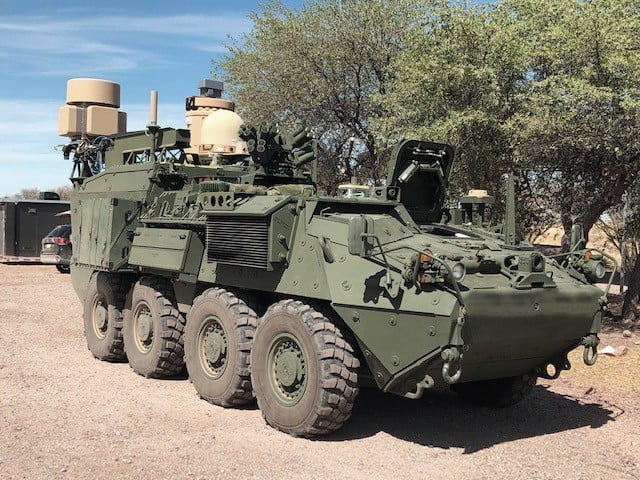Stryker Cyber And Electronic Warfare Suite Gets $59 Million Order From Lockheed

- According to Ken Strayer, project manager for electronic warfare and cyber at the Army's Program Executive Office for Intelligence, Electronic Warfare and Sensors
- The Maryland-based aerospace and defence business in September defeated Boeing subsidiary Digital Receiver Technology and was awarded a $9.6 million second-round contract.
For the Terrestrial Layer System-Brigade Combat Team initiative, which aims to provide soldiers with a useful set of electronic warfare, cyber, and signals intelligence capabilities, Lockheed Martin was awarded a $58.8 million contract to provide prototypes.
The U.S. Army announced the other transaction authorization agreement on July 13; it is valid until October 2023. Prototypes installed on Stryker combat vehicles will be provided by Lockheed, ready for operational evaluation and distribution to an initial unit.
The Army’s TLS-BCT is regarded as a next-generation platform that moves the service one step closer to realising the goals of combined all-domain operations, a comprehensive strategy for organising and fighting. The system is intended to increase awareness and give troops greater options for offensive action that can disable or deny hostile systems.
The TLS-BCT, according to officials, will aid in thwarting modern threats on a battlefield that is becoming more digital. Controlling the electromagnetic spectrum is crucial in modern warfare since it allows for communication with friends as well as the detection and elimination of enemies.
According to Ken Strayer, project manager for electronic warfare and cyber at the Army’s Program Executive Office for Intelligence, Electronic Warfare and Sensors, “the new integrated suite of signals intelligence, electronic warfare, and cyberspace operations provides the warfighter with critical situational awareness of the enemy through detection, identification, location, exploitation, and disruption of enemy signals of interest.”
The agreement announced on Wednesday represents the latest development in the project and is another triumph for Lockheed.
In order to continue its research and development, the Maryland-based aerospace and defence business in September defeated Boeing subsidiary Digital Receiver Technology and was awarded a $9.6 million second-round contract.
Lockheed stated at the time that it will spend a few months perfecting hardware and software designs based on prior knowledge and feedback from soldiers.
The Army’s programme “that will help soldiers operate effectively within the electromagnetic spectrum,” according to Deon Viergutz, vice president of Lockheed’s spectrum convergence division, was one of the projects that team members were “pleased to continue” working with. He made the statement on July 14.
According to Viergutz, “TLS-BCT is an example of Lockheed Martin’s 21st century security vision in action, taking a cutting-edge programme from concept to a fully fielded prototype under an aggressive schedule to put this crucial capability into the hands of the warfighter and help them be ready for future mission needs.”
During a live-fire exercise in Germany this year, the Army discovered a power issue related to new networking gear and ageing Strykers. On June 23, officials assured reporters that the issue was being looked into, will be remedied, and that there might already be a fix with newer models.
It was coordinated with the Program Executive Office for Ground Combat Systems, which works with Strykers.







Facebook Comments